Posts Tagged ‘ Recall ’
Ryobi Recall: Fan Blade Pieces Can Break Off
March 15th, 2017. By LucyC
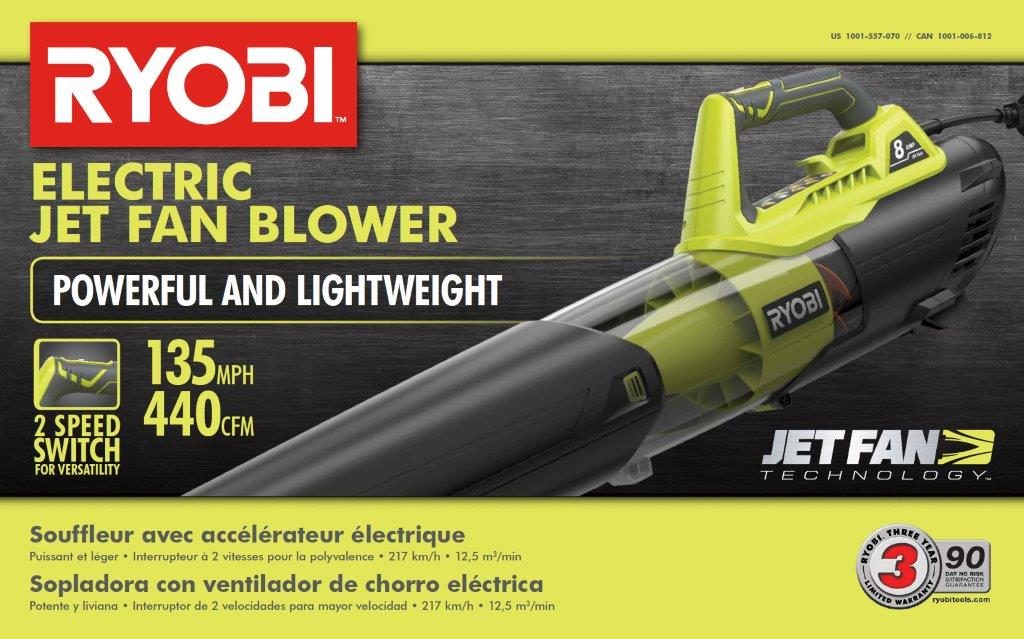 A jet fan blower that bites? You betcha! Ryobi is recalling its defective electric jet fan blowers—not really sure what these are—but I’m guessing it might have something to do with gardening.
A jet fan blower that bites? You betcha! Ryobi is recalling its defective electric jet fan blowers—not really sure what these are—but I’m guessing it might have something to do with gardening.
The recall has been prompted by a rather high number of reported injuries. Apparently, the blower is prone to breaking in a rather bad tempered sort of way, having already caused 10,681 “incidents”, including 25 reports of minor injuries, such as lacerations to the face, hands and legs. These injuries are caused by fan blade pieces being discharged from either end of the blower. Got that?—EITHER end.
The deal is, according to the Consumer Products Safety Commission (CPSC), the plastic fan inside the blower can break “causing the fan blades to be discharged from either end of the blower tube, posing a laceration hazard.” Read the rest of this entry »
67,000 Panic Devices Recalled for Failure to Work
October 12th, 2016. By LucyC
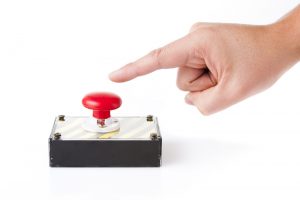 Interesting recall recently—a wireless personal panic device that fails to panic when you need it to. In fact, according to the Consumer Products Safety Commission report, the device can fail to operate altogether in times of crisis, so it “fails” to send a signal to the security system to which it is presumably linked, in case of an emergency. That certainly sounds helpful.
Interesting recall recently—a wireless personal panic device that fails to panic when you need it to. In fact, according to the Consumer Products Safety Commission report, the device can fail to operate altogether in times of crisis, so it “fails” to send a signal to the security system to which it is presumably linked, in case of an emergency. That certainly sounds helpful.
The description is very polite and clearly not meant to cause panic “The wireless personal panic devices can fail to operate, which could result in the device not communicating with the security system if activated in the event of an emergency.” You practically have to read this sentence twice to get the drift. Not alarming at all. (pardon the pun).
So what’s the deal? Does it freeze with fear? Major crises are not in its contract? Who knows. Suffice to say it’s all quite worrying, really. In fact, it could be enough to send you clean over the edge if you’re having or about to have a crisis. It’s also enough to send anyone who purchased one of these for an elderly relative into a state of serious concern. Not good. There you are—or your loved one—in the dark, alone, no way to get to a phone, or contact a passerby or neighbor and the device you purchased in good faith to support you this time of crisis goes: “ah, NO, sorry—not my job.” You can imagine, knowing how completely absorbing all this wearable technology is, that should this thing fail when you need it, you could become more obsessed by trying to get it to work than by the actual event that should have triggered its response.
Never mind the burglar, the chest pain, the mudslide, the 10 car pile-up on your front lawn, the creek that’s turned to class five rapids in your back yard—whatever it may be—the wrist-mounted Interlink device is giving the silent treatment or some kind of error message. And you’re wondering, “did I charge it properly—did I charge it at all? What if I turn it off then on again, or shake it? Oh, but now it won’t turn off, why is it so slow…no wait—there it goes. OMG—why is it so slow?”
Then your thought process is interrupted by the other reality. The emergency. Oh yeah, forgot about that. But maybe distraction is helpful? In any event, there you are in the dark, cold, silence. Just you, and your worthless, wireless personal panic device and the crisis, which presumably is now in full unfold mode. And you didn’t notice.
What are you going to do? Summon the Force? Wait and see if anyone comes? Hope someone else called 911?
Don’t panic—at least there’s the recall, and the fix. If you own one of these Interlogix® wireless personal panic devices, and apparently 67,000 of these devices have been sold across the U.S., the recommendation is that “Consumers should immediately contact their professional security system installer or monitoring company for a free inspection of their personal panic device and a free replacement device for those that fail inspection.” Probably best not to do this immediately—you might want to finish the crisis at hand before embarking on a new one with customer service.
Consumers should contact: Interlogix® at 800-394-4988 Monday through Friday, from 8 a.m. to 8 p.m. PT, email at , or online at www.interlogix.com and click on Customer Service for more information. These devices were sold, through professional security installers and distributors nationwide from May 2014 through January 2016 for about $35 to $50.
Mind the Gap? Elevator Lock Recall Worth Minding
August 16th, 2016. By LucyC
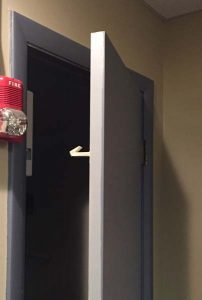
Photo: CPSC.gov
Going Down?
No…wanted to go up actually. But who pays attention to those details, up, down, whatever—I usually get in for the ride before I realize the direction I’m going in—not a great metaphor for life but I digress.
To get to the point (good luck with that), there’s been an elevator recall. Don’t panic if you’re reading this on your way up to your office on the 35th floor. The recall involves residential elevators fitted with electro mechanical door locks. I believe the lingo is EMDLs. Guess what—they don’t work. The locks, not the elevators.
Apparently, the plastic locks can “allow” the landing door to open before the elevator car arrives, “posing a serious fall hazard to consumers attempting to board the elevator.” Allow? So locks can think now? What are the criteria upon which the locks make the decision to open—they don’t like the way you’re dressed? You or your progeny punched all the buttons on your last ride? Enquiring minds want to know.
Back to the recall, I believe the CPSC is attempting to warn people like myself who just move forward when the doors open, not paying attention to direction—as previously stated, or whether or not the elevator is even there. Details, right?
So to put this in context, you’ve pressed the button and now you’re back to your Pokemon Go thing when the outer door to the elevator opens. You are, quite reasonably, assuming that you’re going up to the 2nd floor, when in fact you are going to be taking a quick and potentially catastrophic slip and fall kind of move—without the elevator. All thanks to the EMDLs. (Wanted to use that).
The CPSC is advising, as a remedy, that “Consumers should immediately stop using elevators equipped with the electro mechanical door locks and contact their elevator service company to have the plastic locks replaced with metal parts.” Good advice. For those of us who read these things. I can’t help but wonder how they found out the locks weren’t working properly in the first place?
So far, Porta, the EMDLs manufacturer, has received two reports of lock failure. No injuries have been reported—remarkably. Or perhaps the bodies haven’t been discovered yet? Granny’s missing…but who would think to check the elevator shaft? On reflection, this does sort of have the makings of a Stephen King horror film. Remember “The Shining”?
And for your information, this is no minor recall—there’s 60,000 defective (or empowered, depending on how you want to interpret it) EMDLs out there.
Here’s the CPSC information: “This recall involves all residential elevators with plastic electro mechanical door locks. The EMDLs are installed as part of a complete residential elevator system. Locks included in this recall have a plastic generation 1, 2, 3 or 4 latch and keeper attached to the upper corner on the elevator side of each landing door. A UL or ETL label affixed to the bottom of the EMDL box has “Porta Inc.” printed on it.”
In case you have one of these EMDLs installed, the CPSC advises that “Consumers should contact their elevator service company. Consumers can also contact Porta Inc, toll-free at 844-719-9037 from 8 a.m. to 1 p.m. CT Monday through Thursday or online at www.emiporta.com and click on “Important Product Safety Notice” for more information. Consumers also can email the firm at .
They were sold through elevator manufacturers nationwide from January 2005 through December 2011 for between $20,000 and $40,000. Wow. Wonder what the fix is going to cost…
Better start paying attention—a good metaphor for life.
Well-Being? Well, Not. Nu Skin Diffuser Recall for Mold
July 27th, 2016. By LucyC
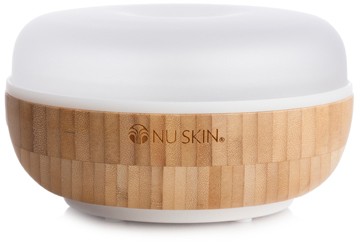 There’s a recall this week—about a mist diffuser from Nu Skin that apparently spreads mold—in addition to whatever it was designed to diffuse in the first place (presumably something to improve your appearance and general well-being).
There’s a recall this week—about a mist diffuser from Nu Skin that apparently spreads mold—in addition to whatever it was designed to diffuse in the first place (presumably something to improve your appearance and general well-being).
Sounds kind of serious, and not a little ironic. And, come to think of it, not terribly unique. Products that harm instead of help are among the most common, if not the most common subject of lawsuits and recalls, particularly when they involve products that cause damage to a person’s health and well-being. Some of these are obvious, and others not so much. Medical products, drugs, hair products, those kinds of things come to mind.
I have to admit, I would never have suspected the possibility of mold from a mister—but then again—why not? Perhaps I should have, as increasingly it seems, consumers must educate themselves about the products they are buying, rather than relying on the manufacturer to provide accurate and in some cases truthful information. Parmesan cheese advertised as 100% parmesan cheese when it contains as much as 7% wood pulp, would be one example. Hey—who doesn’t like a little wood pulp with the Spag Boll?
But—there’s a line between deliberately misleading the consumer and genuinely getting it wrong. I find it hard to imagine that diffusers were designed to spread mold. But then, I’m not a conspiracy theorist, even though I can’t really be sure what the intended purpose is/was of these things, except the obvious: to make money for their manufacturers. Guess that has gone all rather horribly pear shaped.
The misters sold for around $170 per unit. Not cheap. According to the recall, as per the Consumer Product Safety Commission (CPSC) “Mold can develop on the product, posing a health risk to individuals with compromised immune systems, damaged lungs or an allergy to mold.” So, for just under $200 you can develop respiratory problems that may require medical care. Without leaving the comfort of your own home.
You can imagine—coughing incessantly—and not for a moment suspecting the mister.
Nu Skin Enterprises Inc., of Provo, Utah sold about 44,000 of these pretty little things in the US, with a further 4,800 sold in Canada and 400 in Mexico.
FYI—the recall involves Nu Skin Epoch mist diffusers. The diffuser is a plastic bowl with a glass lid and bamboo trim ring, used to diffuse essential oils. “Nu Skin” is engraved in the bamboo on the side of the product. The white and tan diffusers are 6.5 inches in diameter and 3.5 inches in height. The recalled lot numbers are PZ11351, PZ17051, PZ21551, PZ03151 and PZ03451. The lot number is printed on the white plastic on the bottom of the product. The misters were sold exclusively online by www.nuskin.com from January 2015 through March 2016.
No injuries have been reported, according to the CPSC, but that’s hardly surprising, because a) who would suspect; and b) how would you prove it?
Consumers are being advised to immediately stop using the recalled mist diffusers and contact Nu Skin for instructions to inspect the product for mold and for a free replacement mist diffuser if mold is identified.
Nu Skin is reportedly contacting purchasers of the product directly. Hope the letters don’t get lost in the mail…
Hoverboard Fire Hazard Recall by 10 Companies
July 13th, 2016. By LucyC
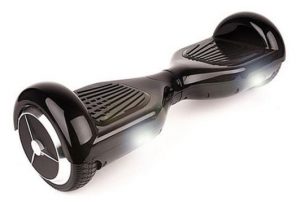
(source: CPSC)
Hoverboards—the tech fad of 2015—are crashing big time this week with a massive recall by 10 manufacturers. It seems that the “self-balancing scooters” as they’re also known, ain’t so safe. While intuitively, you might think—duh!—the problem is not what you might expect.
Apparently, there have been at least 99 incidents of the lithium-ion battery packs in self-balancing scooters/hoverboards overheating, sparking, smoking, catching fire and/or exploding including reports of burn injuries and property damage, according to the Consumer Product Safety Commission (CPSC). Now that does sound exciting. Certainly would liven up your walk around the park. Who said exercise is boring?
You can imagine it—there you are boogying down the street on one of these things—and suddenly you’re scooter is putting on a pyrotechnics display—complete with smoke and sparks. There’s fire at your feet! Onlookers might even think you’re making some uber hip video and start applauding. If you’re on one of these things in traffic, you could really be in trouble. Not to mention the onlooker distracted driving you’d cause—or worse.
The recall, by the way, is massive—something like 501,000 of these things are involved. And they’re not cheap to buy. The recalled scooter boards involved in the recall were sold at mass merchandisers nationwide and online retailers from June 2015 through May 2016 for between $350 and $900. But there are models that go for north of $1000. That’s a lot of cabs, or gym memberships…
Doing a bit of investigating into this toy, it seems that hoverboards are banned from roads and sidewalks in cities around the world. And—airlines and airports. OMG. Don’t even want to imagine that scenario. New York State has made it illegal to ride one on public roads or walkways, as have Australia and the United Kingdom, and many schools (including UCLA), malls and other public places are also jumping on the banning bandwagon.
According to a story on CNET, “retailers such as Amazon and Overstock are stopping sales of some models or even telling consumers to trash ones they’ve already received.”
So, does this mean it’s back to the gym afterall? There’s likely no meaningful exercise—physical exercise—to be had with one of these things. And in fact they don’t hover—so forget any “Back to the Future” fantasies. These boards have two wheels—one on each end—like a horizontal skate board. You’re not required to move the thing along yourself. Just control and steer it with your legs and body. That’s all (ha!) So hop on and, well, catch fire. Wonder if you can get life insurance for riding one of these things…
Apparently they do take some getting used to—a rider needs to learn to balance on them using the two pressure-sensitive footpads that control speed and steering. So no drinking and driving with this baby and definitely NOT something you want to take to a party… or have your teenager take to a party. FYI—these things can do up to 10 MPH—3x average walking speed, so it’s best to kill the Pokemon Go while hoverboarding as well.
CNET also reports that Hoverboards have minimum and maximum weight limits, which are meant to protect the rider and scooter. “Most boards also won’t operate going up or down steep hills, usually over 30 degrees. There are no height limits associated with the boards, though keep in mind that most lift you about four inches above the ground. If you’re particularly tall, you’ll run a greater risk of hitting your head while riding.” Sounds great.
So enter the safety gear—yes—you knew there had to be a merchandising opportunity lurking here somewhere…helmets, knee pads, elbow pads and wrist guards—but nothing that would presumably protect you in a meaningful way from an explosion or fire. Maybe a hazmat suit? Maaaybe not. It does, however, paint a pretty laughable picture—suited up like Michelin man, wobbling uncontrollably as you lurch down the street with sparks and smoke emanating from your feet. It’s a Snapchat moment waiting to happen. The next YouTube sensation, if only for a half day. Yup—a great recreational device—for the onlooker not the rider. (I’m reminded of the Darwin Awards).
All in all, the whole thing sounds way too stressful. One would need anti-anxiety drugs just to get on the thing. Never mind taking it out—actually riding it in public. Anywhere, day or night—preferably never.
You can check out the full hoverboard recall here.
Time for a walk. On the ground—in runners. Oh yeah baby. There’s a lot to be said for doin’ it old school.
Archive by Category
- Accidents (24)
- Airlines (9)
- Asbestos Mesothelioma (262)
- Automotive (25)
- Celebrity (14)
- Class Action (84)
- Complaints/Comments (15)
- Consumer Fraud (84)
- Contest (2)
- Court of Public Opinion (5)
- Crazy Sh*t Lawyers See (61)
- Criminal Law (4)
- Defective Products (111)
- DePuy ASR Hip Recall (2)
- Discrimination (22)
- Drugs/Medical (248)
- Elder Care Abuse (4)
- Emerging Issues (462)
- Employment (54)
- Environment (52)
- Financial (28)
- Food Illness (15)
- Human/Civil Rights (4)
- Insecurities (5)
- Insurance (16)
- Intellectual Property (16)
- Internet/E-commerce (19)
- lawsuits (161)
- Lawyers (20)
- Lawyers Giving Back (43)
- Lex Levity (10)
- Personal Injury (106)
- Pleading Ignorance (53)
- Real Estate (2)
- Recall (6)
- Scam (3)
- Securities (13)
- Settlement (81)
- Tort Reform (2)
- Totally Tortelicious (81)
- Veterans (11)
- Whistleblower (9)